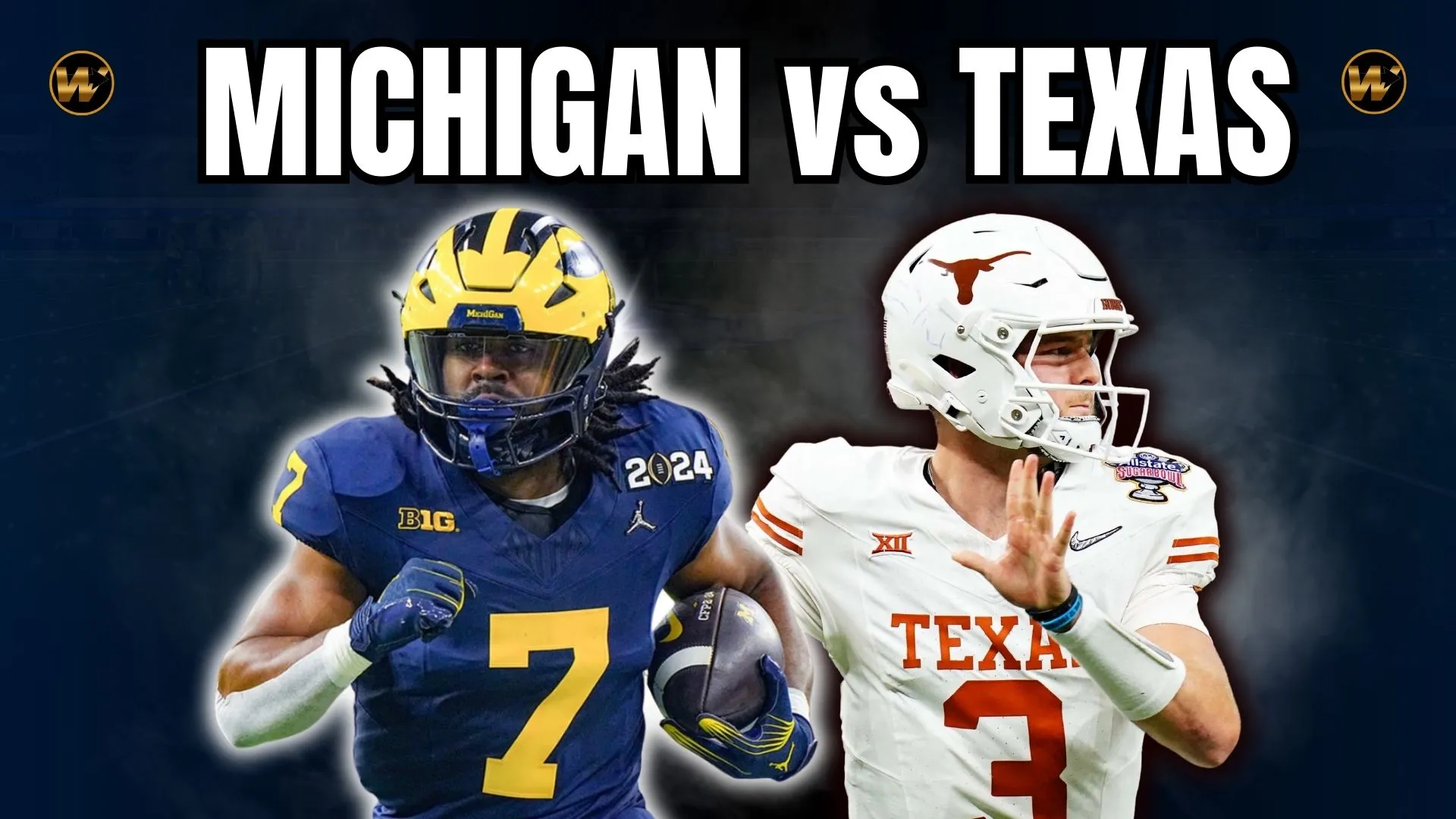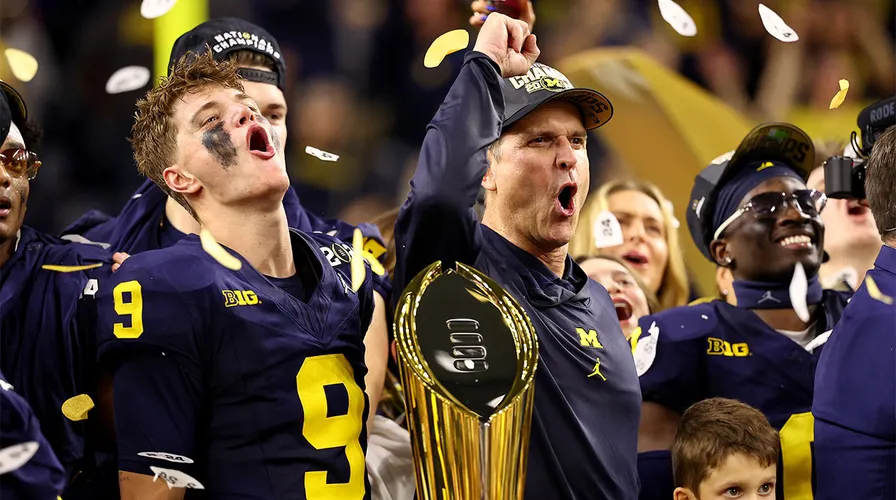What’s at stake in Michigan vs. Texas: The biggest college football game of Week 2
Michigan and Texas have met only once before, but it was a doozy.
The Rose Bowl in 2005 is undoubtedly one of the best bowl games in recent memory. The Longhorns, led by quarterback Vince Young, won 38–37 after scoring 17 points in the fourth quarter. In the closing seconds, a 37-yard field goal sealed the victory.
Twenty years later, two of the best teams from the two best leagues in the Bowl Subdivision will square off in a highly anticipated non-conference game between these two dominant programs.
Michigan, the defending national champion, has added new players to both sides of the ball, a new quarterback, and a new head coach. The No. 9 Wolverines dropped a notch in this week’s rankings after having an unsatisfactory start to the season against Fresno State.
Third Notification In Week 1, Texas easily defeated Colorado State 52-0, building on their success from the previous season under head coach Steve Sarkisian. The Longhorns’ roster appears to be the strongest and deepest of the Sarkisian era despite dealing with summer attrition, which is a very good thing considering this season’s move to the SEC.
The answers to these queries will influence the outcome and the overarching themes of a match that will shape the 2024 season:
What do we know about Michigan?
Jim Harbaugh, the current head coach of the Los Angeles Chargers, was responsible for all but one of those victories. Sherrone Moore, the former offensive coordinator and offensive line coach who succeeded him, is still laboring in Harbaugh’s shadow as he tries to leave his mark on the team.
The Wolverines are still set up to be among the best teams in the Big Ten and a serious playoff contender, despite the significant changes that have occurred since the victory over Washington in January. Inside lineman Mason Graham and outside cornerback Will Johnson, who sealed the victory over Fresno State with a pick-six, are Michigan’s defensive standouts.
However, the offensive line raises serious concerns. Against the Bulldogs, new quarterback Davis Warren, a former walk-on, completed 15 of 25 passes for 118 yards, a touchdown, and an interception. After Fresno State had closed the gap to within one possession, the Wolverines had just one drive of greater than 47 yards, a 75-yard march in the fourth quarter that put them ahead 23-10.
In all, Michigan’s 269 offensive yards were its lowest in a non-conference regular-season game since they were also their lowest in a 41-14 loss to Alabama to start the 2012 campaign. Fresno State may wind up being among the top teams in the Mountain West, but going into Saturday, their offensive line is a mystery due to their lack of punch.
How good is Texas, really?
Among the top teams in the nation, most likely. It’s a fair issue to wonder if Texas belongs in the nation’s top three or four teams, or if the Longhorns belong in the second division of playoff candidates, which presently includes the Michigan Wolverines.
The solution will become clear after Saturday. Texas should hand the Wolverines a 10- or 14-point loss if they are among the best teams in the FBS; it would be a reflection of the talent level of the Longhorns and Michigan’s continuous search for a unique identity.
Texas has the talent to live up to the preseason expectations. Against Colorado State, Quinn Ewers completed 20 of 27 throws for 260 yards and three touchdowns; in relief, backup quarterback Arch Manning threw his first touchdown of the season. Isaiah Bond, a transfer from Alabama, finished with 61 receiving yards, 25 running yards, and a touchdown. When facing the Rams, the Longhorns pitched the program’s second shutout in non-conference play since 2013, forced two turnovers, and gave up 3.1 yards per pass attempt.
How does Michigan beat Texas?
by letting Texas move at its own speed. At the very least, Michigan, which is 1-10 when trailing 30 points or more since the beginning of the 2018 campaign, would be uncomfortable in a shootout.
The worst-case scenario for the Wolverines would be to let the Longhorns dictate the pace. They just lack the punch to match Ewers and the Texas offense, based on only one week; even if they could maintain pace for a quarter or perhaps half of the game, Michigan would ultimately succumb to a torrent of hits.
However, by implementing a run-heavy game plan, the Wolverines may force the Texas offense to stop moving and concentrate on the two things that have the potential to cause an upset: time of possession and a stingy defense. The Longhorns are 19-7 when running 65 plays or more and 7-7 when they don’t since Sarkisian took over in 2021.
How does Texas beat Michigan?
through preventing errors and triumphing on third down. After a 13-game winning streak against Rutgers in September, Michigan hasn’t lost the turnover fight. Losing the turnover margin would make it harder for the Wolverines to defeat Texas, in their opinion.
The simplest method for the Longhorns to counteract any talent or schematic edge is to give Michigan more possessions. That was a problem for Fresno State, as on the first drive of the game, the ball was intercepted in its own territory, giving the Wolverines a 7-0 lead.
Whether Texas can leave the field on third down is the most important element. The team from the previous season was excellent when it came to short yardage situations; they gave up 1.4 yards per run on third down and three yards or less, and on 11 fourth-down carries, they gave up nil yards and only five first downs. Is the defense this year comparable in these circumstances? Given what the Longhorns have lost since the previous season, that is still up in the air.
What will this game mean in the long run?
In nearly every other year in modern college football history, Saturday’s game would’ve been seen for what it was: a marquee non-conference matchup with the potential to dramatically impact the chase for the national championship.
Just last season, for example, a September victory at Alabama was enough to ensure the Longhorns would reach the playoff for the first time in program history by winning the Big 12. But that was under the four-team postseason model.
The 12-team format debuting this season could diminish the meaning of the regular season by emphasizing conference championships and minimizing the impact of a single loss. Against this backdrop, what does Saturday’s matchup in Ann Arbor really mean?
This will not be the elimination game similar non-conference pairings have been in the past; the loser will drop in the US LBM Coaches Poll but will not fall off of the postseason landscape. The winner will get an immediate boost in the polls but will still have to navigate conference play to ensure a playoff berth.
The longer-term impact may be on how the playoff selection committee compares the two power leagues atop the FBS, the Big Ten and the SEC. It’s guaranteed that both leagues will have at least two teams in the final top 12, and likely three or more. When comparing second-, third- or fourth-place teams from the two conferences for at-large bids, the committee could use Saturday’s result to split hairs between contenders with similar resumés



